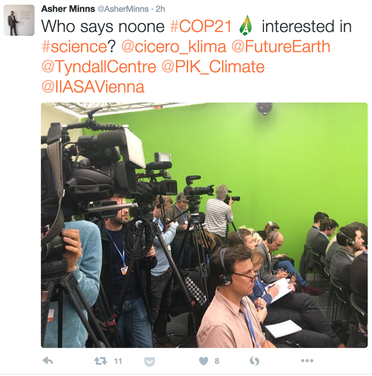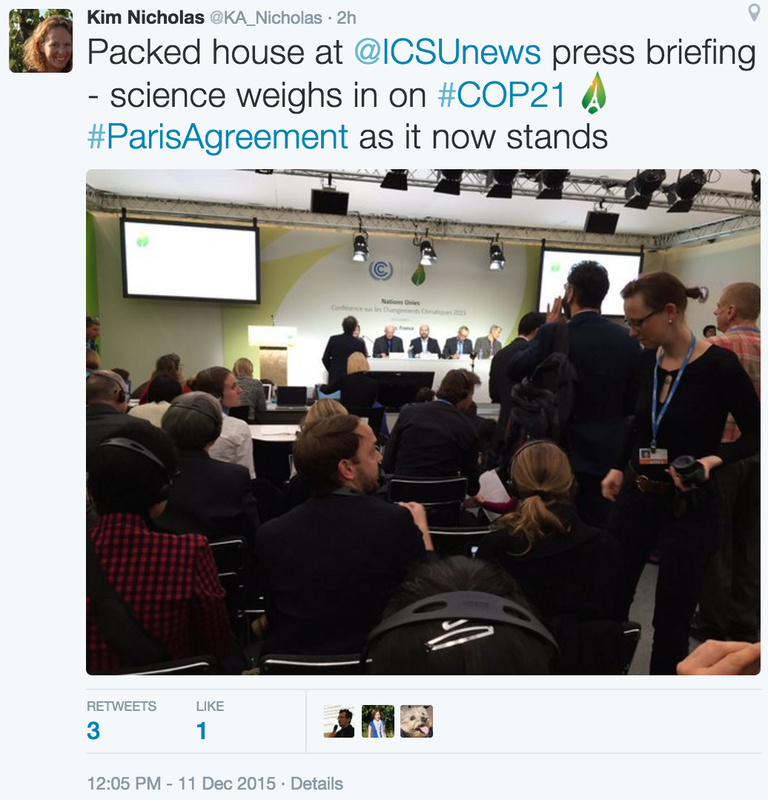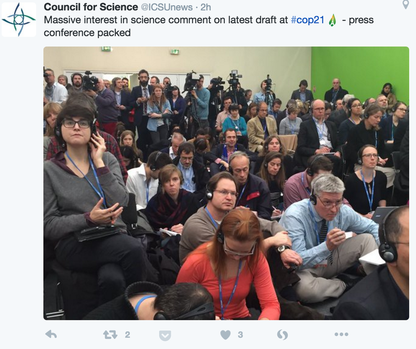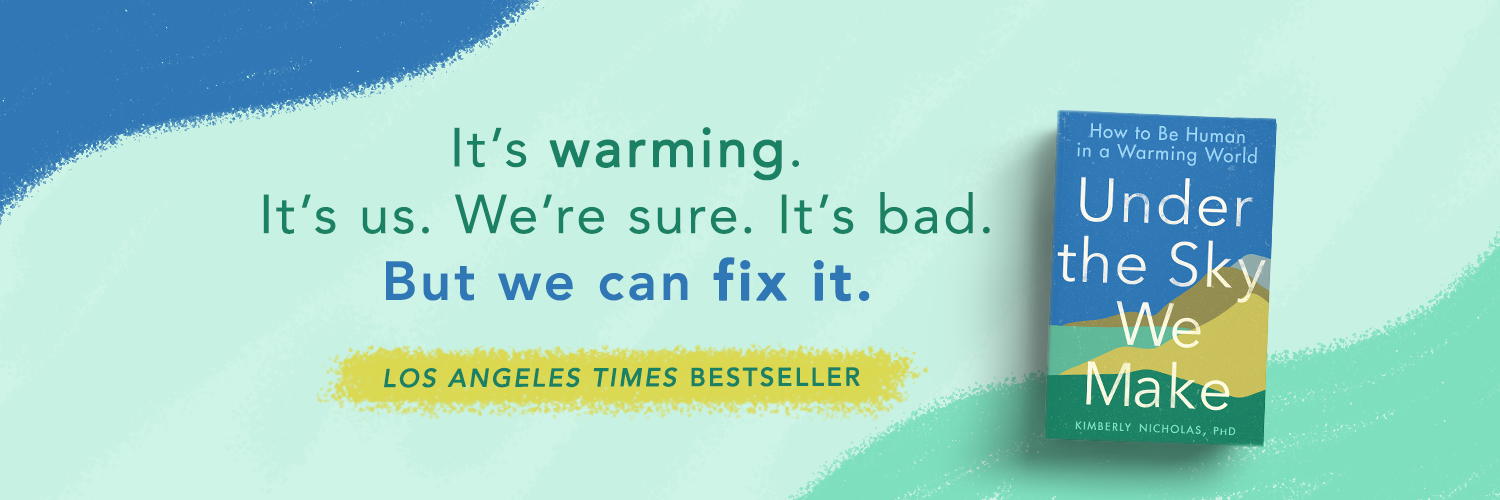|
Note: This blog post now appears on the Road to Paris platform.
Johan Rockström of the Stockhölm Resilience Centre noted that the current text “still has the possibility of transformational change,” with the number one goal to limit warming as far below 2° as possible. Taking as a given the increasing risks posed by increasing temperatures caused by continued emissions, the panel focused on how to achieve the targets currently under discussion, linking it to language in the text that would make the goal consistent with science. Prof. Hans Schellnhuber of the Potsdam Institute for Climate Impact Research confirmed the benchmark that, for a decent chance of meeting a temperature target, the world has to get CO2 out of the system by 2050 for the 1.5 degree target, and by 2070 for 2 degrees. He stated this would require 2% reductions every year to decrease linearly to zero, further noting this was technically possible, and that Germany has been pursuing this goal faster than expected.  The current text calls for "GHG neutrality in second half of the century," which leaves the door open to the necessary zero carbon emissions, but does not ensure it. Several panelists raised concerns about the current “greenhouse gas neutrality” language. Prof. Kevin Anderson of the University of Manchester said the language of neutrality masks the need for “negative emissions,” removal of carbon from the atmosphere using largely unproven means. Schellnhuber echoed the concern that negative emissions were a “gamble,” further stating that every country has to go for complete decarbonization by 2050 to meet the 1.5 degree target. Rockström agreed, stating that "decarbonization" was a better long-term qualitative goal than greenhouse gas neutrality. He further warned the audience that staying under 2 degrees is also about keeping carbon in rainforests and other ecosystems, a service that becomes riskier at higher temperatures due to feedbacks between the land and atmosphere. For any chance of 1.5°, Rockstrom continued that the richest nations (such as the EU, US, Australia, and other OECD countries) need to lead the charge to zero fossil fuel use at 2030, in order to leave some space in the carbon budget for developing countries to transition slightly more slowly to decarbonization. He noted that this is a very ambitious target, which the current climate pledges, or intended nationally determined contributions, do not yet meet. Kevin Anderson stressed the critical nature of aligning national pledges with the agreed target over time through a robust, regular review process going forward, which Rockstrom suggested could occur every 2-3 years, as part of regular Conference of the Party meetings. Joeri Rogelj of IIASA noted that scenarios consistent with the 1.5 target are expected to achieve global peak emissions by 2020. Noting this date leaves no time to waste, Rogelj said, “We must start rapid emission reductions, and not count on carbon capture and storage later.” As everyone at Le Bourget anxiously awaits the next round of text, Prof. Schellnhuber cited his long experience with the climate negotiations process, saying that the second to last text that we now have available was “always stronger” than the final text, as parties had to compromise to reach agreement. He called the current text “extremely progressive, believe it or not,” though he warned that even the current softer goal of “greenhouse gas neutrality after mid-century” could disappear in the final wranglings over the next few hours. Looking ahead, journalist Mark Hertsgaard asked “What has to happen in the next 18 months, not just the next 18 hours, from all governments to be realistic about 1.5?” Kevin Anderson cited a role for individuals, noting a new report showing that 50% of global CO2 emissions come from just 10% of the population. He said this means that energy demand (reducing high-CO2 activities like flying) needs to be reduced by high emitters, including “most of us in this room.” Schellnhuber said that the Paris Agreement will send a message to civil society- and it will be the work of business, cities, investors, and all of us to finish the job. He concluded that COP21 has to make the 1.5 to 2 degree target consistent with long-term actions, and “if they do their job, we'll be fine." Comments are closed.
|
Categories
All
Archives
November 2023
|
KIM NICHOLAS


 RSS Feed
RSS Feed

